When the Nikon Zf was announced, it felt like an early look at what the Z6 III would eventually be. But a little less than a year later and the Z6 III came with some important differences compared to the retro-inspired Zf. So, which one should you buy?
The Nikon Zf is a very curious camera. On the one hand, it represents a concerted effort to bring classic 70s-era Nikon styling to a modern mirrorless body. On the other hand, it featured a brand new IBIS design and Nikon’s best autofocus algorithms to date. There was enough new technology in the Zf that it made me wonder if this was Nikon’s replacement for the Z6 II. Of course, we now have the Z6 III on the shelves, yet both of these cameras still share many features and capabilities to the point where it can get confusing to figure out which product is best for you.
This Nikon Zf versus Z6 III guide will help you decide which camera is the better fit for your photography. We compared these two cameras on some key criteria and the results show that which camera will suit you best really depends on what you value most.
Nikon Zf vs Z6 III: Design and Handling
The Nikon Zf has stunning good looks thanks to its unique design. Many users will adore the more classic analog command dials with easy access to shutter speed and ISO controls while providing more tactile feedback to the photographer. I like the threaded cable release option and the dedicated black-and-white photo mode. I also like that the Zf is rugged and has additional command dials if you want a more modern way of manipulating your exposure controls.
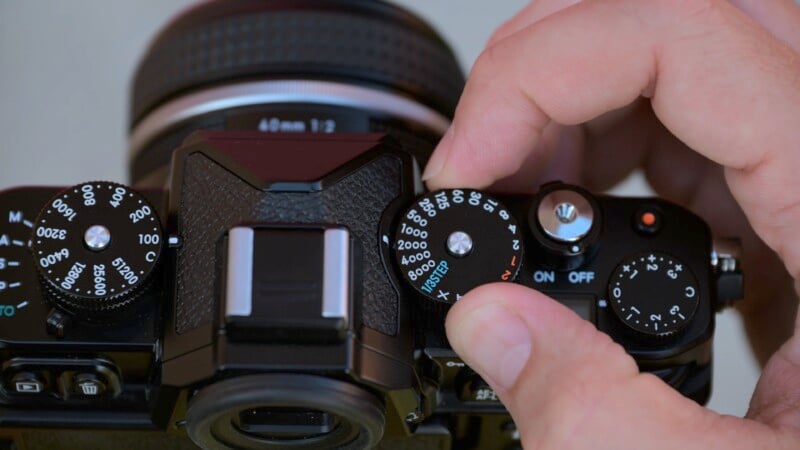
The Nikon Z6 III is very much a modern mirrorless design and the controls just work. I appreciated the additional customizable buttons and proper AF joystick. The camera grip is also far more substantial and lends itself far better to the use of long and heavy telephoto lenses. The overall design of the Z6 III is probably more flexible in demanding situations where intuitive ergonomics are key.
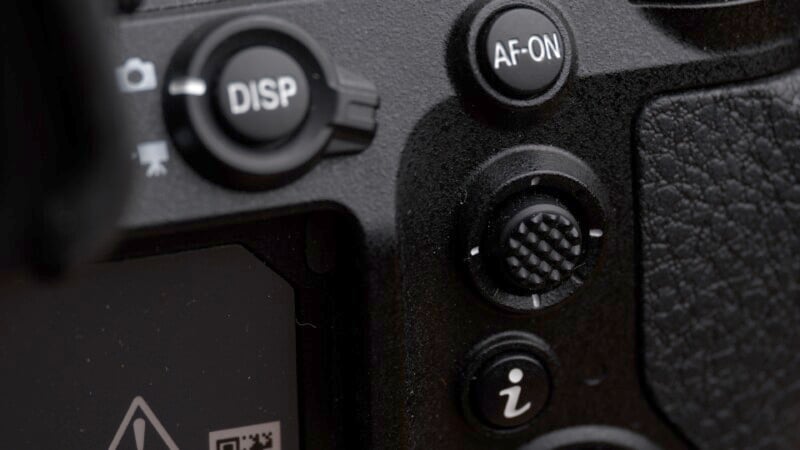
The Winner: A Tie
The Zf has enough variety in its control scheme that it can be customized for different applications. Its stunning good looks will greatly appeal to some photographers and is far more at home on the streets with compact lenses. The Z6 III is understated but absolutely excellent control-wise. It’s a better choice for sports and action photography with that larger grip.
Nikon Zf vs Z6 III: Displays
The Nikon Zf has a fully articulating 2.1-million dot LCD panel and a very capable 3.69 million dot EVF. The refresh rate is excellent for shooting action shots and sports as well. The displays seem perfectly adequate at first glance, but the competition is a little stiffer since the Z6 III hit the market.
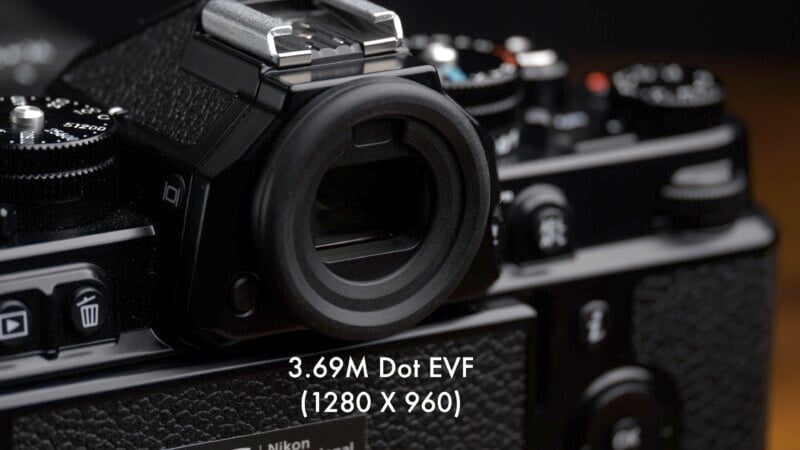
The Nikon Z6 III uses a very similar setup with its 2.1 million dot panel display. The screens articulate the same on both cameras and are effectively identical. However, the Z6 III has a much nicer EVF display which delivers 5.69 million dots of resolution with excellent refresh rates, too. It also is capable of much higher brightness than the Zf display and is much more useful for tracking fast-moving subjects and also for a better playback experience.
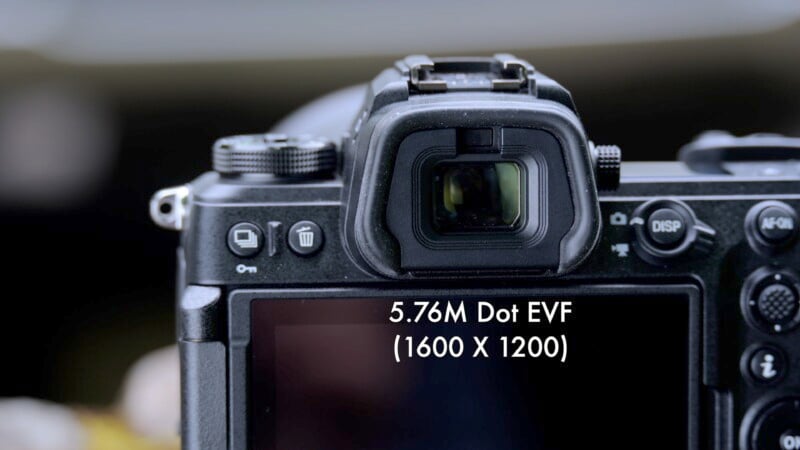
The Winner: Nikon Z6 III
Thanks to its superior EVF, the Nikon Z6 III provides a nicer way to compose images with a more realistic-looking outlook on the scene.
Nikon Zf vs Z6 III: Image Quality
In order to fully evaluate image quality, we have to consider using these two cameras with both the mechanical and electronic shutters. The Nikon Zf has a 24-megapixel full-frame sensor that is very similar to the Z6 II whereas the Z6 III has a novel sensor design with a partially stacked sensor but sadly the dynamic range is downgraded when using the mechanical shutter. In mechanical shutter mode, the Zf will deliver better dynamic range than the Nikon Z6 III and is ideal for most photographic situations.
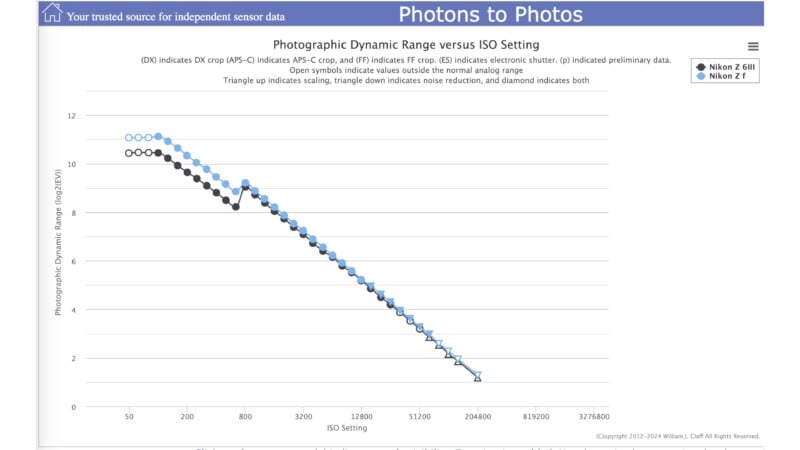
Where the Z6 III excels is when using its electronic shutter. Here, the Z6 III will have fewer rolling shutter issues than the Zf and deliver better dynamic range when both cameras are in electronic shutter mode. Using the electronic shutter will also allow the Z6 III to shoot very quickly for sports and action photography so its strengths largely lie in this arena.
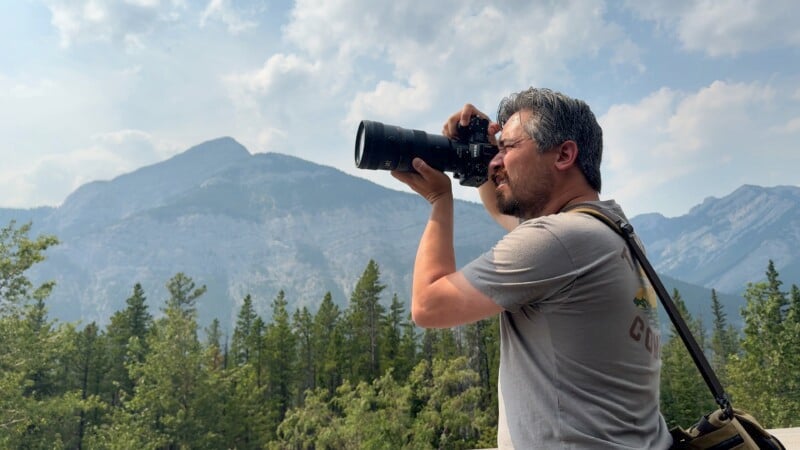
The Winner: Nikon Zf
Despite the Z6 III having a more modern sensor design I feel that most photography situations will be better suited to the use of a mechanical shutter and the Zf has the advantage here. The Z6 III can perform better than the Zf but only in fast-action photography situations.
Nikon Zf vs Z6 III: Storage
Both cameras feature dual card slots which is a useful benefit to have either as a backup solution for safety or just additional storage space for a long day of shooting. The Nikon Zf approaches this in a fairly rare — and some might even say, odd — way: it has a single UHS-II SD card slot and then backs this up with a microSD card slot. Although the transfer speed options are similar, microSD cards are easy to lose and represent a further annoyance with having two different card sizes to keep track of.
The Nikon Z6 III also utilizes two different card types but at least one of them enhances the shooting speeds of the camera. The Z6 III has a standard UHS-II SD card slot as its secondary port but has a much faster CFexpress Type B slot. The CFexpress card allows for longer sustained bursts and transfers files quickly to a computer.
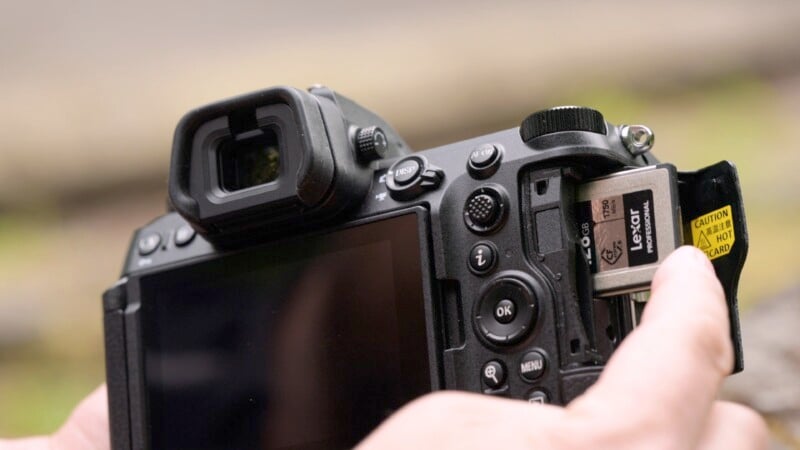
The Winner: Nikon Z6 III
It’s great that both cameras at least have a backup slot but the Z6 III has a more professional setup with a faster and less fiddly card type which also enables its faster shooting performance.
Nikon Zf vs Z6 III: Autofocusing and Burst Rates
Both the Nikon Zf and the Z6 III have the latest Nikon autofocusing algorithms and this translates into excellent AF performance on both platforms. However, there is a slight difference and it again comes down to the different types of 24-megapixel sensors in each. I was pleased with the Nikon Zf’s performance but it does result in the occasional missed shot. It also has a decent RAW file burst rate of 11 frames per second and can shoot up to 30 shots a second in a JPEG-only mode.
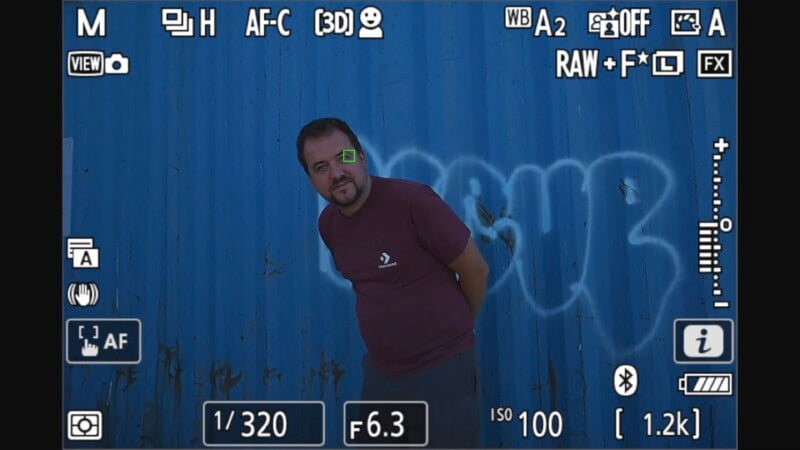
The Nikon Z6 III has one advantage over the Zf: because its sensor can read out much faster than the older sensor in the Zf, the camera can make more autofocusing calculations much faster while tracking a subject. We got a more consistent hit rate with the Z6 III all thanks to the partially stacked sensor that it uses even when all other parameters are equal. The Z6 III also can push 20 RAW files per second if it needs to and up to 120 per second in JPEG mode.
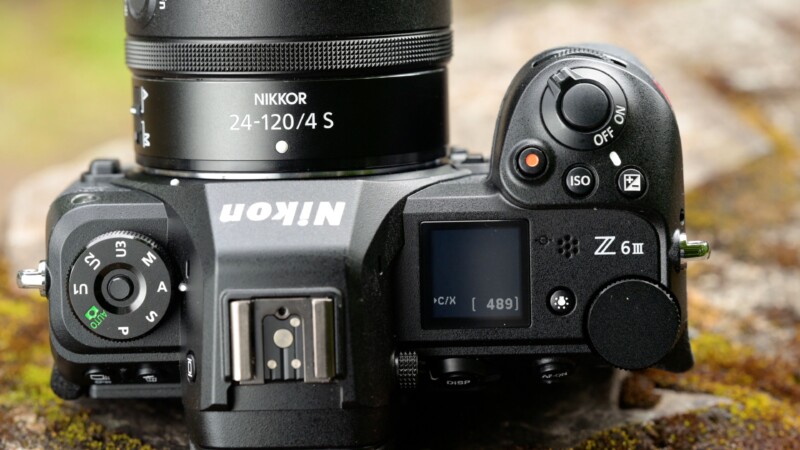
The Winner: Nikon Z6 III
A slightly better autofocusing experience is to be found in the Nikon Z6 III and this will pay dividends to the fast-action photographer when push comes to shove. The Z6 III is also the clear winner when it comes to rapid-fire shooting.
Nikon Zf vs Z6 III: Video Quality
The Nikon Zf is a far more capable video camera than it gets credit for. It can shoot 10-bit log recording and has waveforms to assist with proper exposure. The 4K 60p footage is also decent, albeit it does come with a crop.
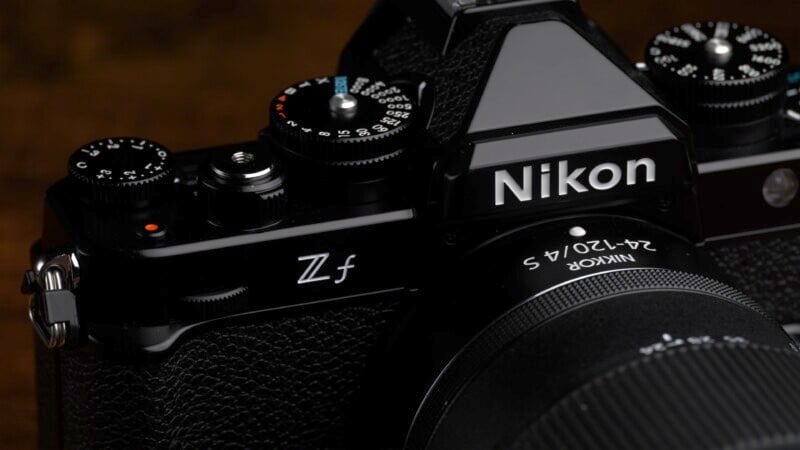
The Nikon Z6 III is definitely better suited as a hybrid photo/video shooter with its ability to capture 4K 60p footage without a crop and up to 4K 120p with one. Just like the Zf, there is a 10-bit log recording but the Z6 III can also shoot RAW video to an external recorder. Otherwise, it has the same waveforms and 3D tracking AF during video that the Zf has making the overall video recording package superior.
The Winner: Nikon Z6 III
It’s an easy win for the Nikon Z6 III with its enhanced video capabilities and more advanced video recording modes.
Nikon ZF vs Z6 III: The Final Verdict
Tallying up our scores, we can see that the Nikon Z6 III is the more advanced camera and is more capable as both a video camera and as a fast action photography tool. This does come with a roughly $500 premium — the Zf costs $2,000 while the Z6 III costs $2,500 — and worse dynamic range when a fast shooting camera isn’t needed. All that said, even with only one category win, many photographers will prefer the looks of the Zf and the better image quality for studio and landscape use.
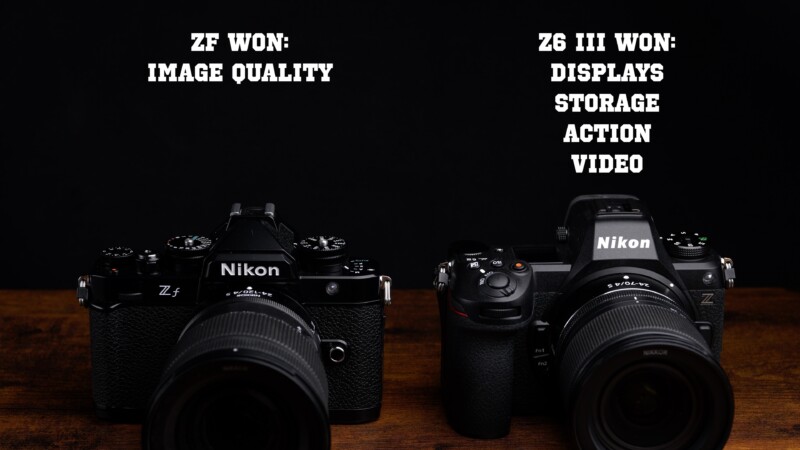
Both cameras prove to be versatile tools with good handling and autofocus performance and I feel that the strengths of the Z6 III tend to be for applications more suited to event work or sports and wildlife. The final takeaway, though, is that regardless of which camera is better for you and your photography, Nikon has a very strong lineup of middle-tier full-frame cameras.
